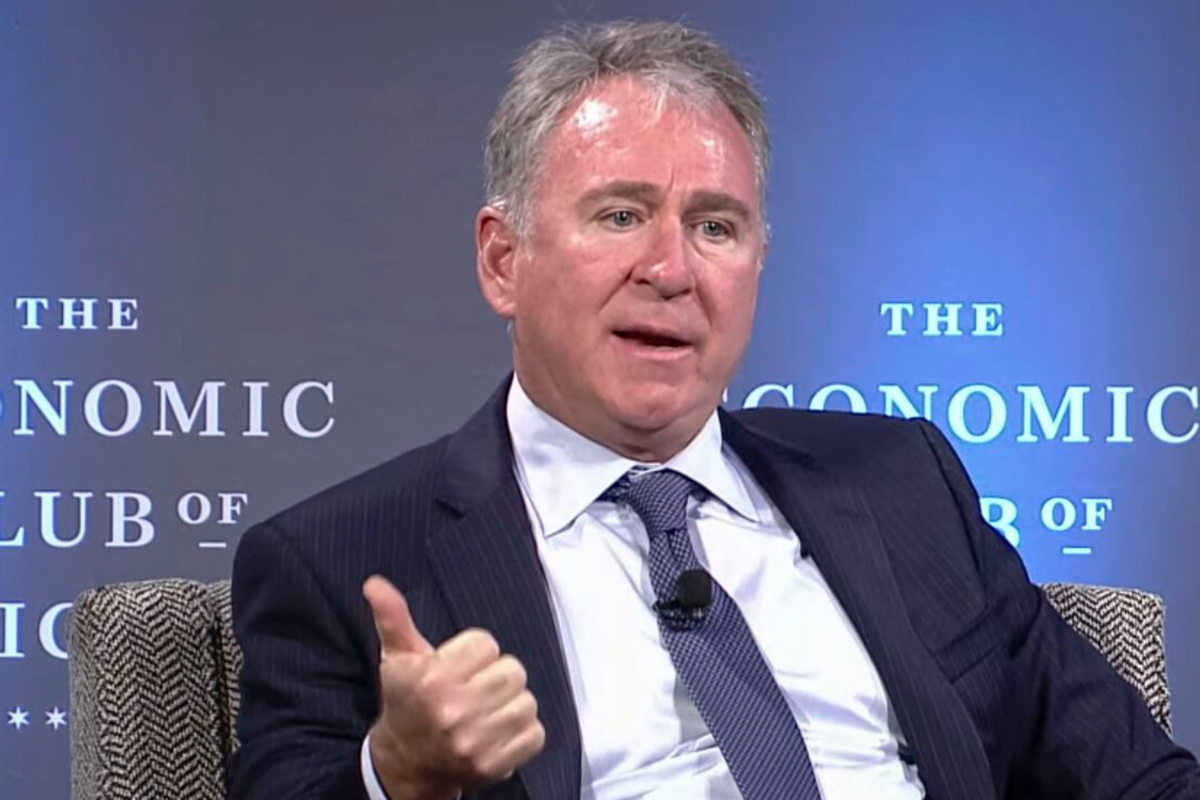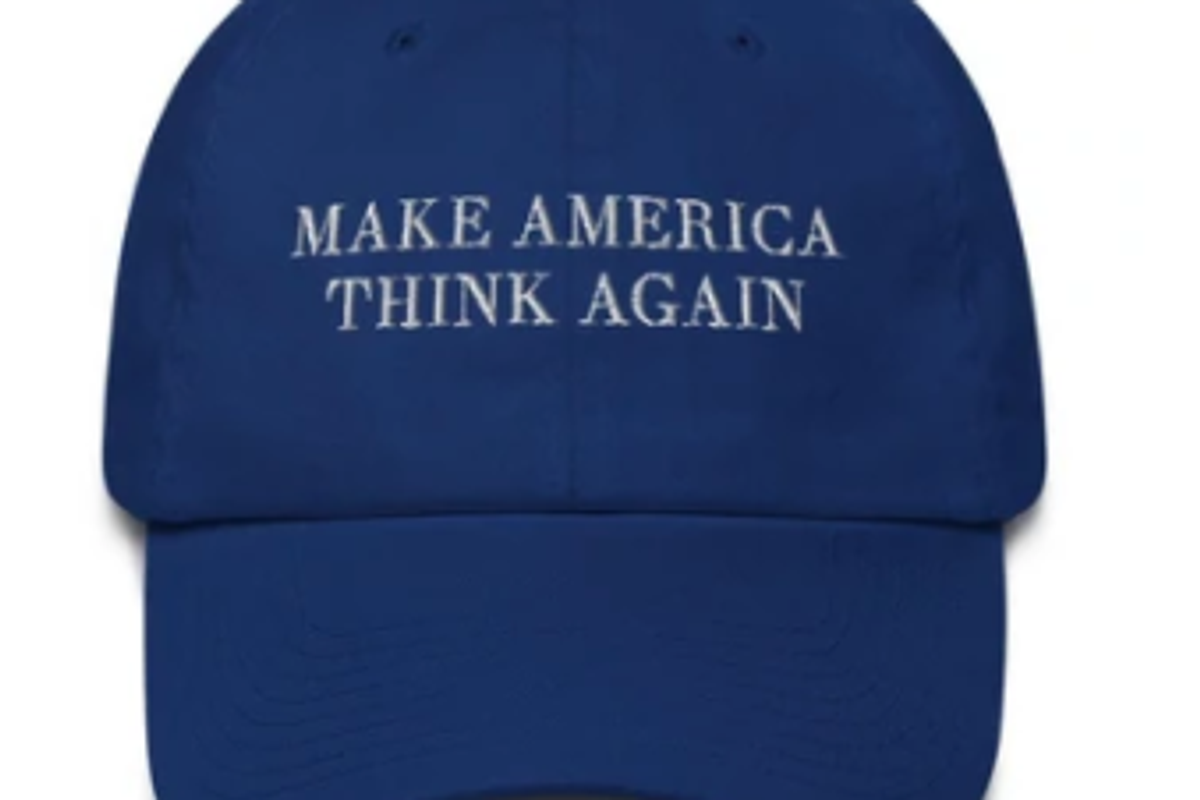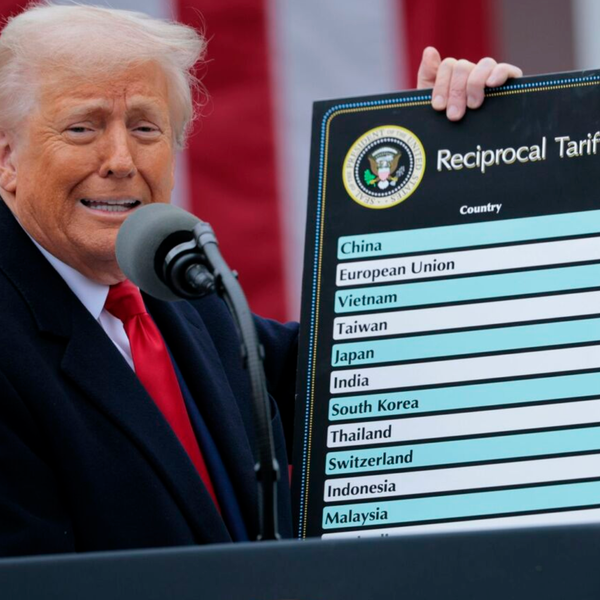Ken Griffin Says Soaring Gold Is A Key Signal -- And He May Even Be Right

Ken Griffin
Here are two sentences I never expected to write:
1. Ken Griffin may be right.
2. The price of gold may be telling us something important.
Ken Griffin, for those who don’t know, is a hedge fund billionaire who was a big supporter of Donald Trump in the last election. That is, he was one of those ultra-rich Trump backers for whom being an insurrectionist-criminal convict-Epstein pal-scammer-serial bankrupt with clear autocratic tendencies didn’t matter. What mattered was “TAX CUTS!”, “DEREGULATION!”. But you often find that kind of self-serving myopia in wealthy and powerful men, who inhabit a gilded bubble that leaves them unable to see what is right in front of their faces.
A few weeks ago, however, Ken Griffin pronounced that he was shocked, shocked to discover that Trump isn’t a champion of free enterprise after all, and that he’s actually building a system of crony capitalism in which business success depends on your political connections. Well, I could have told Griffin that this was coming. In fact, I did.
Still, better late than never. Griffin deserves some credit for being willing to speak publicly about his current misgivings over Trump, rather than joining the nauseating chorus of praise for Dear Leader. So I found it interesting that he sees the soaring price of gold as an economic warning sign, an indication that Trump is causing the world to lose faith in America.
Here’s the price of gold over the past year. The price of gold is currently $4,037 per troy ounce, a record-setting price as it has skyrocketed in the past two months. It has risen over 54 percent since mid-November 2024:

Normally I pay little attention to gold prices, but in this case I think Griffin has a point.
On gold: In general I’m with John Maynard Keynes, who called the fixation on gold a “barbarous relic.” You can’t use gold to make payments (other than the occasional bribe): Try buying a house with ingots. Some people seem to believe that gold will offer a refuge if society descends into chaos, but let’s be real: Do you really think gold bars would help you navigate a Fallout-type post-apocalyptic landscape?
Still, people continue to hold a lot of gold — around $27 trillion dollars’ worth. That’s more than 6 times the value of all crypto, despite the recent runup in Bitcoin etc. So in the words of Fallout’s Lucy MacLean, “okey dokey.”
So what drives gold’s price, and what do movements in that price tell us?
Some people believe that the price of gold reflects expectations of future inflation. There were many assertions to that effect in the early Obama years. Conservatives who insisted that Obama’s policies were inflationary pointed to the rising price of gold for support. Indeed, the real price of gold — the gold price divided by the overall level of consumer prices — rose significantly during Obama’s first few years in office:

These claims prompted me to write a wonky blog post — basically a short paper, but I hope fairly readable — arguing, in essence, that holding gold isn’t an alternative to holding currency. It is, instead, an alternative to holding bonds, which pay interest. And the driver of rising gold prices after the financial crisis was, I argued, a sharp fall in the real rate of interest — the interest rate minus expected inflation – due to the bursting of the housing bubble and the economy’s deep recession.
We can observe the real rate of interest directly, because the U.S. government issues TIPS, “Treasury inflation protected securities” — bonds whose future payouts are linked to the Consumer Price Index. The interest rate on TIPS basically is the real rate, while the spread between rates on TIPS and ordinary bonds measures market expectations of future inflation. And TIPS rates plunged after the global financial crisis, explaining the rise in gold prices even though inflation was low, not high:

A side issue that has been worrying me: TIPS are linked to the official Consumer Price Index. But the Bureau of Labor Statistics won’t be issuing new reports during the government shutdown, which means that it’s highly likely that the next CPI report, due Oct. 15, won’t come out on time if at all, and it’s anyone’s guess when we’ll get fresh data. How will Treasury handle that?
More broadly, if the Trump administration succeeds in politicizing the BLS, TIPS won’t be protected against inflation. They’ll only be protected against inflation the administration is willing to admit is happening. Have investors thought through the implications?
Back to my main theme. As Griffin says, gold prices have soared recently. Yet as you can see from my second chart, real interest rates are up, not down. What’s driving interest rates? Probably a combination of big budget deficits, made bigger by the One Big Beautiful Bill, and the AI boom, as well as the fear that Trump will politicize the Fed and stoke persistent inflation. But these higher real interest rates should drive gold prices down, not up.
So what’s happening? The most likely story, which seems consistent with what Griffin is saying, is that a growing number of investors — including, in particular, foreign central banks — are moving into gold because they no longer consider U.S. debt a safe asset.
Now it’s hard to pin down exactly what investors fear, perhaps because they aren’t sure themselves. But many previously inconceivable possibilities are now quite conceivable given the Trump administration’s radicalism. Runaway inflation hidden by rigged official statistics? Expropriation of the reserves of governments Trump doesn’t like? Forced conversion of foreign assets into 100-year bonds? Given the administration’s record so far, how confident are you that none of these things could possibly happen?
As I said at the top of this piece, I normally pay don’t pay much attention to gold, which doesn’t play an important role in the modern economy. But I believe that the recent runup in gold prices is telling us something — namely, that the world is losing faith in America.
And perhaps Ken Griffin’s warnings are also telling us that even ultra-rich hedge fund titans are starting to worry about the monster they helped create.
Paul Krugman is a Nobel Prize-winning economist and former professor at MIT and Princeton who now teaches at the City University of New York's Graduate Center. From 2000 to 2024, he wrote a column for The New York Times. Please consider subscribing to his Substack.
Reprinted with permission from Paul Krugman.
- 'The Worst Food': Trump Hosts 'Orgy Of Corruption' Crypto Banquet ›
- Is Trump Hiding Jobs Report? Workers Seeking Seasonal Positions As Employment Plunges - National Memo ›
- Warning: Here's Why The Fed Can't Rescue Markets From AI Bubble - National Memo ›








